The drive to this national monument in the Gila Wilderness Area is scenic, steep, narrow, twisting and beautiful. Diane was stressed and her arm rest suffered. The mountain highway approaching the monument has steep sections of 10-12% grade for several miles, and large drop-offs with no guard rails. A lower gear is necessary in sections to avoid burning out one’s brakes. Larger vehicles, including bigger RVs, need to take an alternate route, which is still challenging.
At an elevation of 6,700 feet (2,040 meters), it was cool but sunny when we arrived in the late morning. Snow was visible nearby, but had finally relinquished the trails a few days prior. The cliff dwellings are accessible by a short but steep hike up Cliff Dweller Canyon, which was apparently a challenge for some prairie dwellers who were departing and complaining when we parked in the almost empty lot. The south-facing cliffs, sun kissed even in winter, quickly became visible as we climbed among the ponderosa pines.

The Gila Cliff Dwellings were built and occupied by the Mogollon people during a short 25 year period about 700 years ago (1275 – 1300 CE). The Mogollon normally built pit houses or surface pueblos but, breaking with tradition, the Tularosa Mogollon built inside the 5 cave alcoves of this canyon. It is not known why the dwellings were abandoned after such a short period.
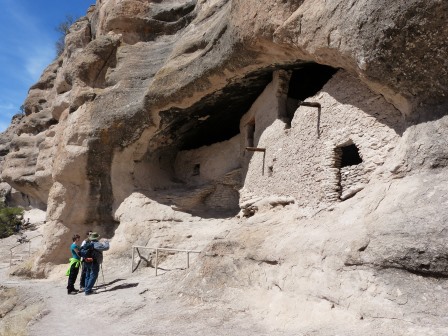
Of the 46 total rooms, most of the walls are still standing. There were believed to have been occupied by 10 to 15 families.
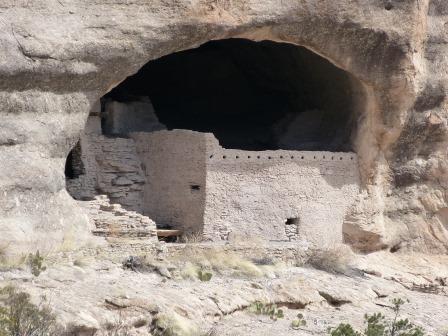
The dwellings were a practical place to live. They were protected from the weather, and their exposure allowed the low sun of winter to enter while keeping out the higher, hotter sun of summer.

Cliff Dweller Creek, at the bottom of the canyon, provided a convenient source of water, and the nearby Gila River valley was a good place for hunting, gathering, and growing food. Of the 32 species of plant remains found in the caves, 24 were native (e.g. grapes, berries, acorns, nuts) while the other 8 including corn, beans, and squash were cultivated.
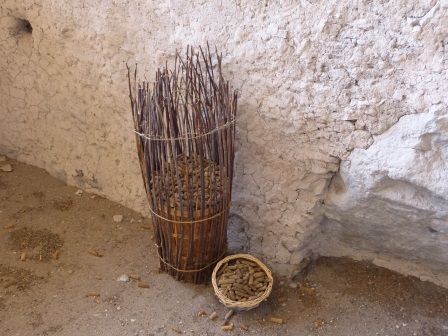
Visitors are welcome to enter and explore the caves.
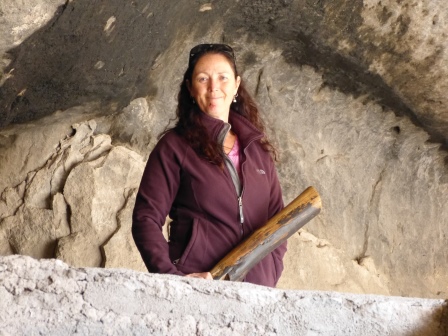
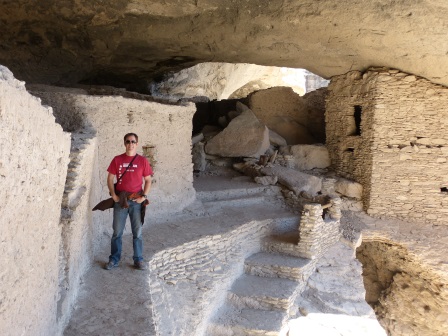
Ladders and walkways are provided to move about the caves. Scrambling around the cliffs reminded me of our visit to Petra, though this was on a much smaller and more primitive scale.

The first European contact with the Gila Cliff Dwellings was by Henry B. Ailman who was living in Silver City at the time, about 45 miles away. Legend has it that in the summer of 1878, Ailman and some friends were on a jury list. To avoid serving, they organized a prospecting trip to the Gila River where this site was discovered.
Gila Cliff Dwelling National Monument is an interesting place to visit. The beautiful drive, the remote location, the natural splendour, and the hands-on exploring of a historical site made for an really enjoyable day.
